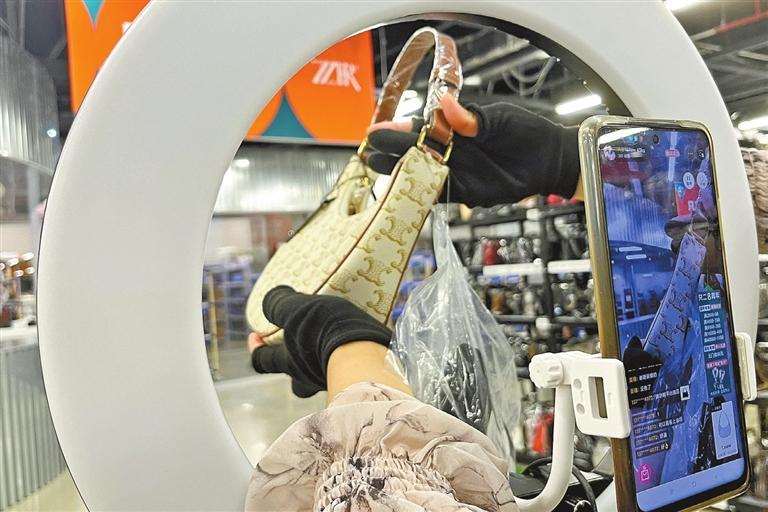
TO become a “master” authenticator at Fashionphile — the highest level of training to weed out designer fakes at the luxe online marketplace — takes more than 8,000 hours of rigorous schooling, according to the company. Its competitor, The RealReal, also relies on human senses and instinct — recognizing the smell of a US$25,000 Hermès Birkin bag, or the feel of its smooth Barenia leather — but the retailer’s first round of checks is undertaken through AI, with software trained on 30 million images to discern nearly imperceptible differences in the stitching or the placement of hardware. At the same time, an algorithm calculates an item’s risk based on everything from the consignor’s selling history to the popularity of a product on the black market. Over the past few years, luxury and tech leaders have hoped to turn the average consumer into an authenticator, with the ability to check in a matter of minutes — or even seconds — if a quilted Chanel wallet on chain is legitimate or not. The AI-driven app Entrupy claims it can alert buyers and resellers if a designer sneaker or purse is suspicious through a handful of uploaded photos, while fashion tech company The Ordre Group has partnered with Burberry and Patou, among others, to take an item’s unique “digital fingerprint,” such as a small section of a piece’s textiles and construction. Called Authentique, the program registers each ID on the blockchain, which can’t be replicated and is considered both easily traceable and secure, versus methods like RFIDs (radio frequency identification tags and readers) and holograms, which have been falsified. “It’s as easy as picking up the phone and pointing it at a product … and knowing whether it’s fake or real,” asserted Simon Lock, founder and CEO of The Ordre Group. The AI-based technology “microscopically analyzes” its materials, he explained, down to how fibers have been dyed and blended, and is being trained for accuracy even when a garment undergoes wear and tear over time. Authentique is just one version of a so-called digital ID or passport: a digitized “twin” (or NFT — non-fungible token) of a designer piece that allows buyers to verify it is genuine and track its life cycle. In Europe, some kind of digital passports for garments and textiles may soon become law; over the past couple of years, some of the industry’s biggest players have coalesced around this technology to aid in both anti-counterfeiting and sustainability initiatives. Founded by LVMH, OTB and Prada Group, which collectively rep labels including Louis Vuitton, Dior, Fendi, Bulgari, Marni, Maison Margiela and Prada, among others, the Aura Blockchain Consortium is the largest effort to standardize such scannable IDs across fashion and luxury, with founding members digitizing millions of products in their catalogs. These tactics are all part of the industry’s hope to neutralize the booming counterfeit market. As counterfeit garments and accessories have evolved from cheap knockoffs to tricky so-called “superfakes,” and luxury labels churn out more and more styles each season, authentication methods have become increasingly complex. Experts agree that current AI models aren’t reliable enough on their own, particularly for items fresh off the runway that algorithms haven’t been trained on yet. Fashionphile, which says it receives around 700,000 bags a day, abandoned its own plans to utilize AI in 2017, finding that it wasn’t “good enough.” Susan Scafidi, founder of Fashion Law Institute, believes that a “hybrid model” will always be necessary. “There will always be a need for human suspicion with regard to something that just isn’t quite right,” she said. At the same time, she added, “any human authenticator that ignores technology is working with one hand tied behind their back.” Overall, Scafidi sees a push to empower luxury consumers with more transparency about the products they buy, in order to fold them into a system of anti-counterfeiting checks. (SD-Agencies) | 
